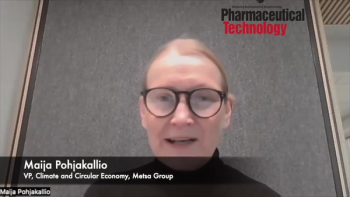
Equipment and Processing Report
- Equipment and Processing Report-01-20-2016
- Volume 9
- Issue 1
Pharmaceutical Manufacturers Go Green
Pharma companies reduce the impact of manufacturing on the environment with innovations in energy and waste treatment.
Pharmaceutical companies are increasingly making public commitments to sustainability goals and investing in "green" chemistry and the equipment and manufacturing practices needed to meet these goals. For example, in November 2015, Patheon, Biogen, Johnson & Johnson, Genentech, and Novartis, signed the American Business Act on Climate Pledge and declared their goals, which include reducing carbon or greenhouse gas emissions, water use, and waste to landfill, and increasing the use of renewable energy (1).
Using cleaner energy generation is one way to address these targets. Power plant company FuelCell Energy, for example, announced plans to install a combined heat-and-power fuel-cell power generation system at Pfizer’s Groton, CT R&D facility to provide low carbon electricity and steam. The installation is expected to be operational by summer 2016 (2).
Key components of a “green manufacturing” program are reducing waste, energy, and water use, said David Lynch, who heads up environment, health, and safety, and engineering for GlaxoSmithKline (GSK)’s global manufacturing and supply in an
AstraZeneca China employed sustainable manufacturing design and practices at its solid-dose facility in Taizhou, China, which won the International Society for Pharmaceutical Engineering (ISPE) 2015 overall
Preventing release of API into the environment was another area of focus for the Taizhou project. For Betaloc (metoprolol) production, for example, the team identified an innovative electro-oxidation process to pretreat Betaloc-containing waste water prior to conventional biological treatment. Oxidation converts the toxic API into smaller, non-toxic molecules and removes more than 99% of API from the waste water, reports AstraZeneca. The process is fully automated and the cost and environmental impact of running the system are minimal. The company notes that the process copes well with fluctuations in API concentration.
With innovations such as these, scientists and engineers are on their way to making a greener future for pharmaceutical manufacturing.
References
1. “Pharma Companies Join the American Business Act on Climate Pledge,” Dec. 3, 2015,
2. “FuelCell Energy to Install Clean Power at Pfizer R&D Facility,” Jan. 13, 2016,
Articles in this issue
almost 10 years ago
Trends in Parenteral Fill–Finishalmost 10 years ago
Advancing Container Closure Integrity TestingNewsletter
Get the essential updates shaping the future of pharma manufacturing and compliance—subscribe today to Pharmaceutical Technology and never miss a breakthrough.




